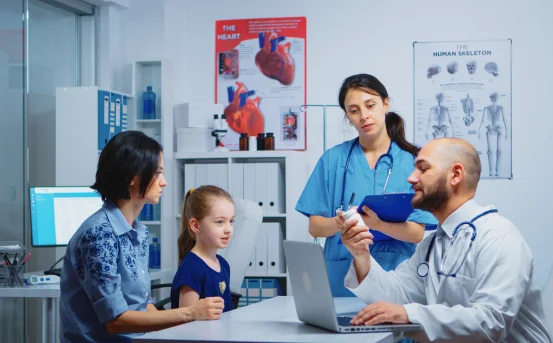Hepatitis B is a serious liver infection caused by the Hepatitis B virus (HBV). It affects millions of people worldwide and can lead to chronic liver disease, liver cirrhosis, or even liver cancer if not diagnosed and treated in time. Early diagnosis of Hepatitis B is crucial for effective management and prevention of complications.
The virus spreads through contact with infected blood or other bodily fluids. It is most commonly transmitted through unprotected sex, sharing of contaminated needles, unsafe blood transfusions, and from mother to child during childbirth. Because of the wide range of transmission routes, anyone regardless of age, gender, or geography can be at risk.
What is Hepatitis B?
Hepatitis B is a viral infection that primarily targets the liver. It spreads through contact with infected blood, semen, or other body fluids. Common transmission routes include unprotected sex, sharing of needles, transfusion of unscreened blood, or from mother to baby during childbirth. The infection can be acute (short-term) or chronic (long-term), depending on how the body responds to the virus.
Acute Hepatitis B often resolves on its own, especially in adults, but chronic infection can last a lifetime and cause significant liver damage. This makes timely diagnosis and monitoring vital to preventing serious health issues.
Why Early Diagnosis of Hepatitis B Matters
Diagnosing Hepatitis B in its early stages can significantly reduce the risk of liver damage. Many people with Hepatitis B may not show symptoms initially, which means the disease can go undetected for years. During this silent phase, the virus can still damage the liver and be transmitted to others. Early diagnosis enables :-
-
Timely medical intervention
-
Prevention of disease progression
-
Monitoring for liver-related complications
-
Protecting close contacts through vaccination
Hence, screening and diagnostic tests are essential, especially for high-risk individuals such as healthcare workers, pregnant women, and people with multiple sexual partners.
Common Symptoms That May Prompt Testing
While some individuals with Hepatitis B remain asymptomatic, others may exhibit mild to severe symptoms. These may appear between one and four months after exposure to the virus. Common signs include :-
-
Fatigue and general weakness
-
Jaundice (yellowing of the skin and eyes)
-
Dark-colored urine
-
Loss of appetite
-
Nausea or vomiting
-
Abdominal discomfort, especially in the liver area
-
Joint pain
If these symptoms are persistent or you have a known risk of exposure, it is crucial to get tested for Hepatitis B.
Diagnosis of Hepatitis B
The diagnosis of Hepatitis B primarily involves a combination of blood tests that detect the presence of HBV, assess liver function, and determine the stage and activity of the infection. Below are the key diagnostic methods:
- Hepatitis B Surface Antigen (HBsAg) Test
This is the most common screening test for Hepatitis B. A positive HBsAg result indicates that the person is infected with the Hepatitis B virus and can transmit the infection to others. If HBsAg persists for more than six months, it confirms chronic Hepatitis B.
- Hepatitis B Surface Antibody (anti-HBs) Test
This test is used to check for immunity against the virus. A positive anti-HBs result suggests that the person has recovered from a past infection or has been successfully vaccinated.
- Hepatitis B Core Antibody (anti-HBc) Test
This test detects past or ongoing infection with HBV. The presence of anti-HBc usually indicates that the person has been exposed to the virus at some point. There are two types:
-
IgM anti-HBc :- Indicates recent infection.
-
IgG anti-HBc :- Indicates past or chronic infection.
- Hepatitis B e Antigen (HBeAg) and Antibody (anti-HBe)
HBeAg is a marker of active viral replication and high infectivity. The presence of anti-HBe, on the other hand, typically signals a lower level of virus activity. These markers help assess how actively the virus is multiplying in the body.
- HBV DNA Test (Viral Load Test)
This test measures the amount of HBV DNA (virus genetic material) in the blood. It helps determine the severity of the infection and guides treatment decisions, especially in chronic cases.
- Liver Function Tests (LFTs)
LFTs evaluate how well the liver is working. They check for elevated liver enzymes (like ALT and AST) that suggest inflammation or damage to liver cells. Abnormal LFT results can indicate liver involvement and the need for further evaluation.
- Liver Ultrasound or Elastography
If chronic Hepatitis B is suspected, imaging tests like liver ultrasound or elastography may be conducted to assess the liver’s condition and check for signs of fibrosis or cirrhosis.
Who Should Get Tested for Hepatitis B?
Routine screening is not recommended for everyone, but certain individuals are at higher risk and should undergo testing. These include :-
-
Individuals born in countries with high HBV prevalence
-
People with a history of unprotected sex or multiple partners
-
Intravenous drug users
-
People undergoing dialysis
-
Individuals with HIV or Hepatitis C infection
-
Pregnant women
-
Healthcare and laboratory workers
-
Close family members of HBV-positive individuals
Testing in these groups can help with early detection and reduce the risk of transmission to others.
What Happens After Diagnosis?
If you test positive for Hepatitis B, your doctor will determine whether the infection is acute or chronic. Most acute cases do not require specific treatment and resolve on their own. However, chronic Hepatitis B requires long-term monitoring and, in some cases, antiviral therapy to control the virus and prevent liver damage.
Regular follow-up tests, lifestyle changes (like avoiding alcohol), and liver health monitoring are part of managing chronic Hepatitis B. Vaccination of close contacts is also strongly recommended.
Is Hepatitis B Preventable?
Yes, Hepatitis B is one of the few liver diseases that is completely preventable through vaccination. The vaccine is safe and effective and is recommended for all infants, unvaccinated adults at risk, and healthcare workers.
In addition to vaccination, using condoms, avoiding shared needles, and ensuring blood products are screened are crucial preventive strategies.
Conclusion
The diagnosis of Hepatitis B is a multi-step process that relies on blood tests, symptom assessment, and sometimes liver imaging. Because many people don’t show symptoms early on, at-risk individuals should not wait to get tested. Early detection through routine screening and prompt medical advice can significantly improve outcomes and prevent the spread of infection.























